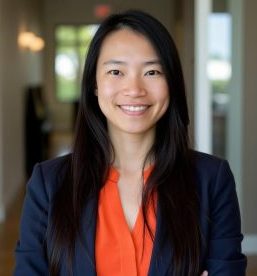Infusing Family Culture in STEM Learning
Posted on May 23, 2022 in Practice

Read the blog post written by Dr. Hsiu-Wen Yang, and learn how to infuse family culture in STEM learning opportunities.
I have lived in the United States for almost eight years, and I am always proud of my cultural heritage. Throughout these eight years, whenever I see my culture being reflected positively in the community, in my workplace, or through mass media, I feel a sense of belonging.
We all need to feel a sense of belonging and positive affirmation. As a researcher and practitioner in the field of early intervention and early childhood special education, I have always been aware of the importance of building a sense of belonging for children and their families . Certainly, creating a sense of belonging is not only displaying photos of children and families from various cultural backgrounds but also embedding children’s experiences and family traditions into the teaching practices.
Food is a great way to provide connections to different cultures and family traditions. For example, I grew up eating congee (粥) or rice porridge and Dan Bing (i.e., Taiwanese egg pancake roll; 蛋餅) for breakfast. My family and I love having hot pot every holiday and special occasion.
In this blog post, I will describe an activity that could use food and pretend play as a means to support children’s STEM learning. At the end of the blog post, I will also introduce a couple of STEM storybooks about AAPI culture and food.
Making play dough dumplings
Dumplings are something I often make and eat with my family. Our dumplings use a flour-based dough and we use cabbage, ground meat, and chives that are lightly seasoned with soy sauce as the filling. We then either steam or pan fry our dumplings. There are many other types of dumplings of different shapes and sizes within Taiwanese and Chinese cultures as well as in other cultures around the world. As an occupational therapist, I love using this activity to improve children’s fine motor skills, practice bilateral coordination, and engage in STEM concepts (e.g., sequencing, counting, shape).
Materials:
- Play dough
- A play dough rolling pin or a wooden stick
- A Circle shape cookie cutter or the bottom of a drinking cup.
- Ingredients (e.g., marbles, beads, small blocks)
Directions:
- Take a small amount of the dough, roll it into a sphere
- Use the palm to press the dough down
- Use the rolling pin to flatten the dough and make it into a circular shape (or use the cookie cutter)
- Place the ingredients in the middle of the rolled out dough or”dumpling skin “
- Fold the”dumpling skin ” into half
- Seal the dumpling by making creases on the top using your thumb and pointer finger
Visual pictures

Use questions and conversation to engage children in STEM learning and talk about children’s culture and family tradition
- What food does your family like to make and eat together on special days?
- First, we roll the dough into a ball, then we roll it to flatten it. What should we do next?
- We have 10 friends in class and everyone would like one dumpling. How many dumplings have you made? How many more do we need?
- What shape are you making?
- How many beads can you put in your dumpling? How can we put more ingredients in the dumpling?
- What else would you like to fill dumplings with?
STEM storybooks about AAPI food culture that you could consider including on your bookshelves

Luna’s Yum Yum Dim Sum (Storytelling Math)
Natasha Yim
Math
Luna is having Dim Sum on her birthday. She and her brothers are talking about how to share buns fairly.

Too Many Mangoes
Tammy Paika
Science & Math
Kama and Nani help their grandpa pick mangos from his giant mango tree. After the picking, Kama and Nani share some mangoes with neighbors.
 Ohana Means Family
Ohana Means Family
Ilima Loomis
A family prepares a tasty root called Kalo for a traditional luau celebration.
 One Grain of Rice: A Mathematical Folktale
One Grain of Rice: A Mathematical Folktale
Demi
Math
A young girl tricks a greedy king to double one grain of rice every day for three years.
 Ten Blocks to the Big Wok
Ten Blocks to the Big Wok
Ying-Hwa Hu
Math
Mia and her uncle Eddie travel from their apartment to a restaurant in Chinatown. They see many things in Chinatown.
 The Ugly Vegetables
The Ugly Vegetables
Grace Lin
Science
A little girl and her mother grow vegetables in their gardens while their neighbors grow colorful flowers.
 Kai Goes to the Farmers Market in Hawaii
Kai Goes to the Farmers Market in Hawaii
Catherine Toth Fox
Kai and his mother buy food grown in Hawaii from the farmers.


